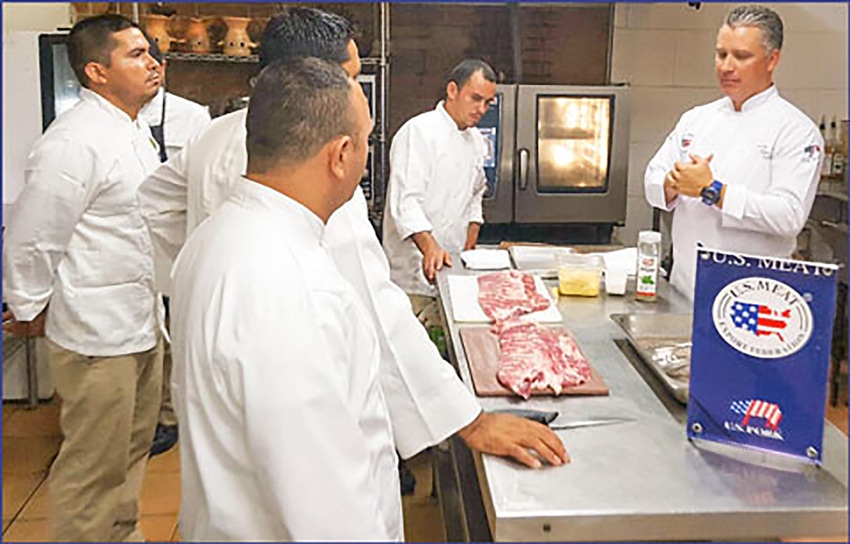Pork taking center plate in Central America, Dominican Republic
Educational programs have been an essential component of USMEF’s promotional efforts in the CAFTA-DR region, as more customers now appreciate the high quality of U.S. pork.
June 18, 2019

Building on a record performance in 2018, U.S. pork exports to Central America and Dominican Republic are very strong again this year. Through April of this year, exports were up another 11% in volume (29,321 metric tons) and 8% in value ($68.3 million).
Honduras and Guatemala are the largest Central American markets for U.S. pork, but growth leaders in 2019 include Costa Rica, where exports have increased more than 40% year-over-year, and Panama, where shipments are up more than 30%.
“For U.S. pork in the CAFTA- DR region, the top three markets are the Dominican Republic, Guatemala and Honduras. Now there are opportunities in other markets such as Costa Rica, which by the way has the highest per capita consumption of pork,” says Gerardo Rodriguez, U.S. Meat Export Federation regional marketing director for Mexico, Central America and the Dominican Republic. “In the Dominican Republic, we have seen a revolution in the way they consume U.S. pork. In the past, pork was just considered an ingredient for further processing. Now, today, pork is center of the plate.”
Exports to the Dominican Republic, the largest destination for U.S. pork in the region covered by the CAFTA-DR, are also ahead of last year’s record pace, with exports through April totaling 14,170 mt valued at $31.1 million.
Rodriguez notes that educational programs have been an essential component of USMEF’s promotional efforts in the CAFTA-DR region, as more customers now appreciate the high quality of U.S. pork and understand the importance of not overcooking the product.
“In the market we have been trying to educate how to cook pork, how to get the product juicy and tender, because in most cases, the problem is they overcook pork and people were not taking advantage of the attributes of the product,” Rodriguez says. “We have seen the way markets perceive pork now as being safe. They understand now the way U.S. pork is being raised in America. When they see the U.S. pork logos, it is a seal of confidence in that what they are eating is a safe product for their family.”
He adds that U.S. pork has benefited tremendously from the market access gains secured in CAFTA-DR. By lowering tariff rates and creating larger tariff rate quotas, this agreement has expanded opportunities for a wide range of U.S. pork cuts in the region’s retail, foodservice and processing sectors.
“CAFTA-DR has been very beneficial. We have been seeing really great reduction in tariff,” Rodriguez says. “In the case of Honduras, the local production is very low. Even though they get to the limit of TRQ, they would rather pay over quota because they need the product and it is valuable for them — the quality, the consistency of U.S. pork.”
Source: USMEF, which is solely responsible for the information provided, and wholly owns the information. Informa Business Media and all its subsidiaries are not responsible for any of the content contained in this information asset.
About the Author(s)
You May Also Like



